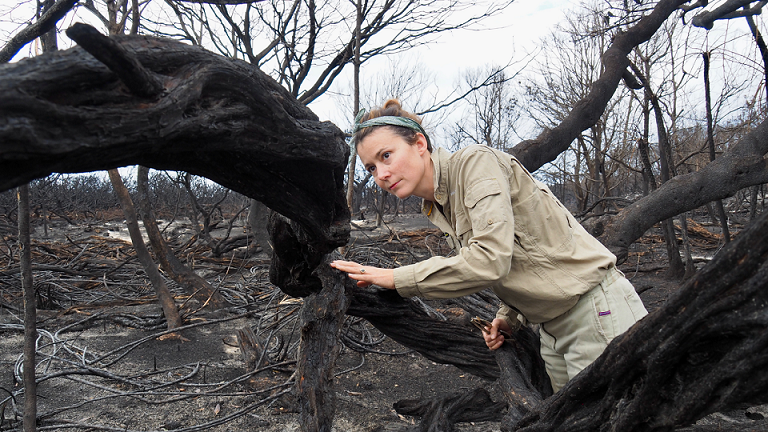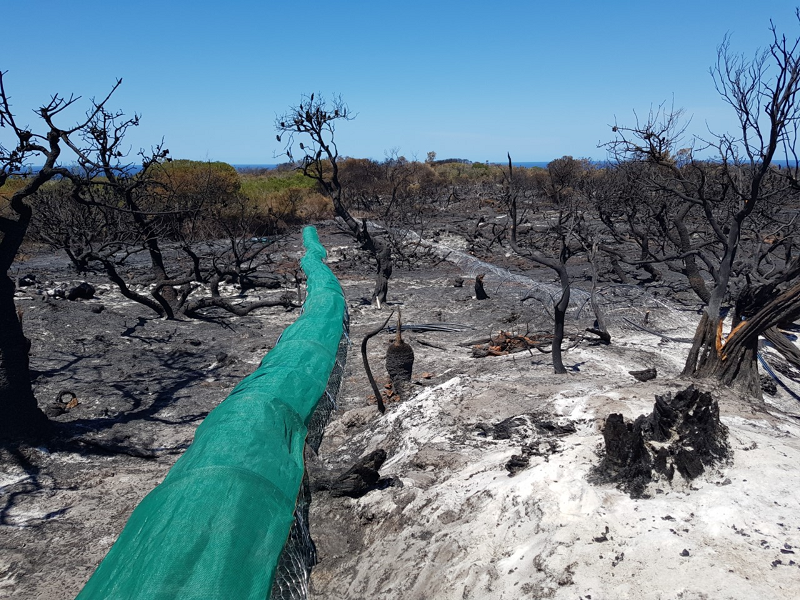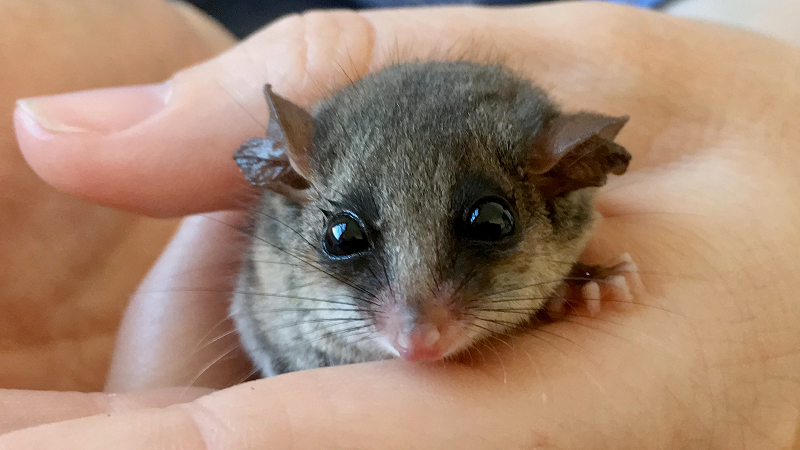On 17 October, a NSW National Parks and Wildlife Service hazard reduction burn at Sydney’s iconic North Head jumped containment lines. The uncontrolled and intense fire moved rapidly across the headland, burning through approximately 62 hectares of bush and a substantial section of Australian Wildlife Conservancy’s (AWC’s) project area. Our team has been on the ground since the day after the fire, rescuing wildlife, creating shelters and assessing the impact to the headland.
At North Head, AWC is contracted by the Sydney Harbour Federation Trust to deliver research and monitoring projects (of extant wildlife, feral predators and the Critically Endangered Eastern Suburbs Banksia Scrub) and reintroductions of locally extinct mammals. AWC is not contracted to deliver fire management at North Head.
This year we were celebrating a decade of effective conservation partnership at North Head, including the successful reintroduction of three locally extinct species including native Bush Rats, Brown Antechinus and Eastern Pygmy Possum.
 © Joey Clarke/AWC
© Joey Clarke/AWC
All equipment (camera traps, SD cards and data) in the burnt area has been destroyed, along with much of the habitat where we carry out threatened wildlife reintroductions and areas of the headland’s Critically Endangered Eastern Suburbs Banksia Scrub. Experiments running at the burn site have had to be abandoned.
 ©Rhiannon Khoury/AWC
©Rhiannon Khoury/AWC
We are still measuring the impacts, but our urgent priority is rescuing wildlife. Using vital lessons learned from our Kangaroo Island and Wollombi Valley projects, we are installing refuge tunnels, nest boxes and watering points and providing supplementary food for surviving animals.
Taronga Zoo vets are treating injured wildlife at their clinic, and we want to thank them for this much appreciated support. AWC is also working with National Parks and Wildlife Service and Sydney Harbour Federation Trust during this stage of the response.
We are monitoring for feral predators on a daily basis in this exposed environment and it is crucial that we stop feral cat and fox incursions.
 © Joey Clarke/AWC
© Joey Clarke/AWC
Time is of the essence – we must act now to protect surviving wildlife.
If you would like to support our recovery efforts, we would greatly value your help to purchase urgently required materials and equipment to replace what has been lost in the fire.
AWC ecologists are in the field at North Head, delivering immediate action and implementing our response plan. To donate, please click below or phone 08 9380 9633.
Support recovery efforts at North Head